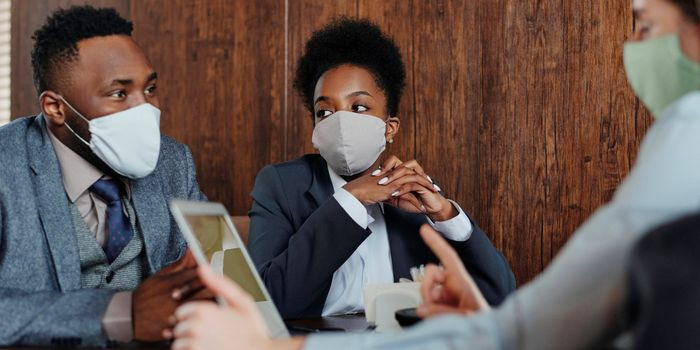Coronavirus Update: Used Mask Worse Than No Mask, Increases Risk For COVID-19, Study Suggests
KEY POINTS
- Wearing masks that have less than 30% filtration efficiency, such as old masks, is worse than not wearing one, a study suggests
- Wearing a mask changes the way air flows around the face
- This could make a person more susceptible to inhaling aerosols into the nose
Reusing a face mask could be worse than not wearing one at all when it comes to COVID-19 protection, a new study suggests.
A group of researchers from the University of Massachusetts Lowell and California Baptist University has found out that masks slow down airflow —making people more susceptible to breathing in particles — and a dirty face mask won't be able to properly filter the tiniest of droplets, posing a risk to those using it.
The study, published Tuesday in the journal Physics of Fluids, said that a new three-layer surgical mask is 65% efficient in filtering particles in the air. But when used, that efficiency dwindles down to just around 25%.
Study author Jinxiang Xi said that most people have the misconception that it is still safer to put on a used face mask than to not wear one at all. But he explained that this puts people at an even higher risk of getting exposed to COVID-19, EurekAlert reported.
"It is natural to think that wearing a mask, no matter new or old, should always be better than nothing," Xi said. "Our results show that this belief is only true for particles larger than 5 micrometers, but not for fine particles smaller than 2.5 micrometers."

For the study, Xi and his co-authors developed a computer model of a person wearing a pleated three-layer surgical mask to track how the face covering affected airflow and how particles passed through. The researchers also looked at how the tiny droplets settled onto the face and in the airway and where they would land in the nose, pharynx or deep lung.
The researchers found that a mask changes the airflow around the face of the wearer. Instead of air entering the mouth and nose through specific paths, it instead enters both of them through the entire mask surface but at slower speeds.
This makes the wearer more susceptible to inhaling aerosols into the nose, thus more particles that don't get filtered out would enter the respiratory tract, according to the study.
The researchers also noted that the pleats of a face mask significantly affect airflow patterns — with their efficacy changing with more and more use.
"We hope public health authorities strengthen the current preventative measures to curb COVID-19 transmission, like choosing a more effective mask, wearing it properly for the highest protection, and avoid using an excessively used or expired surgical mask," concluded Xi.
© Copyright IBTimes 2025. All rights reserved.





















